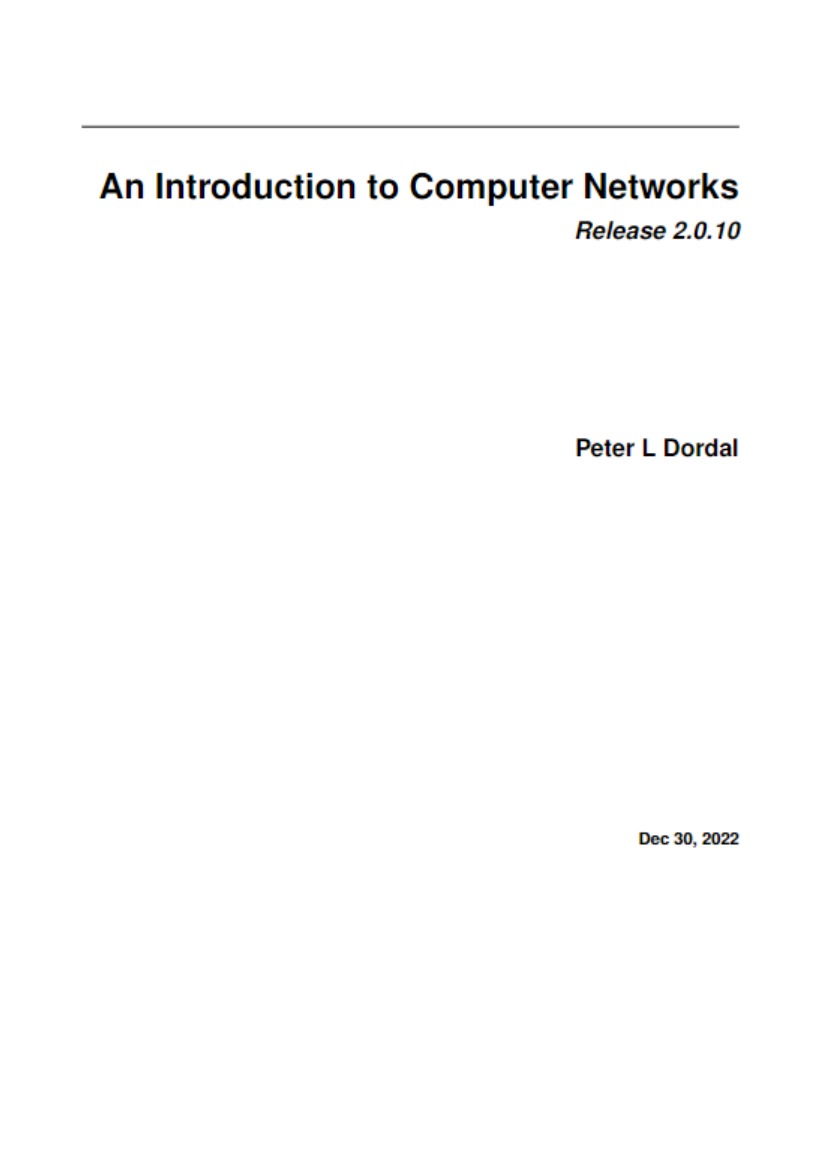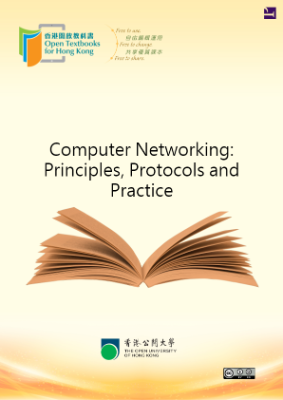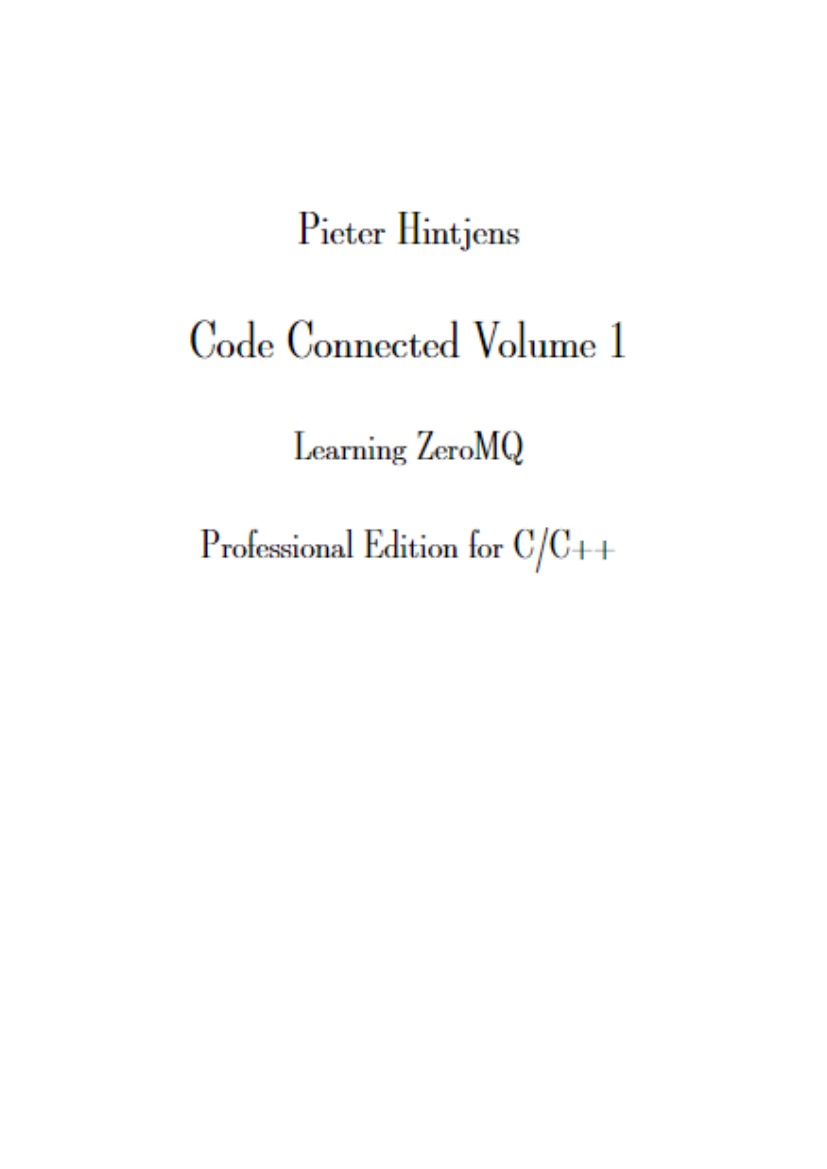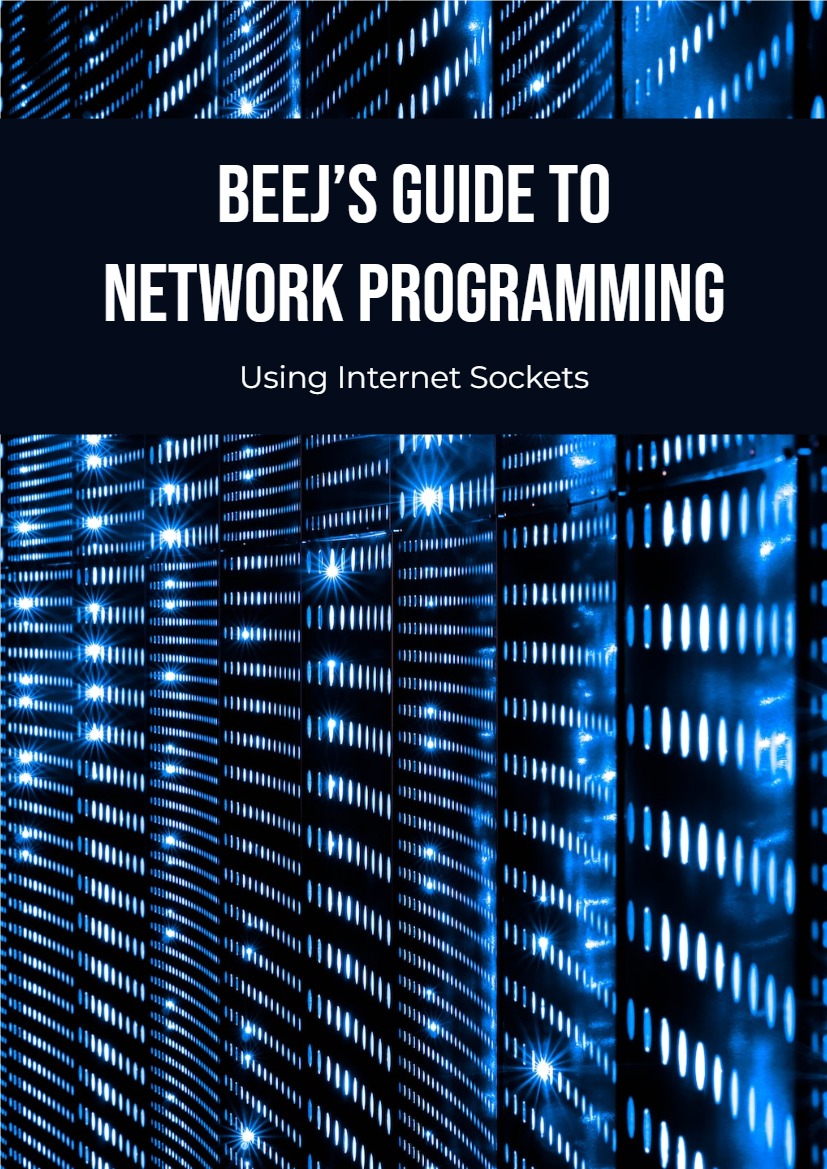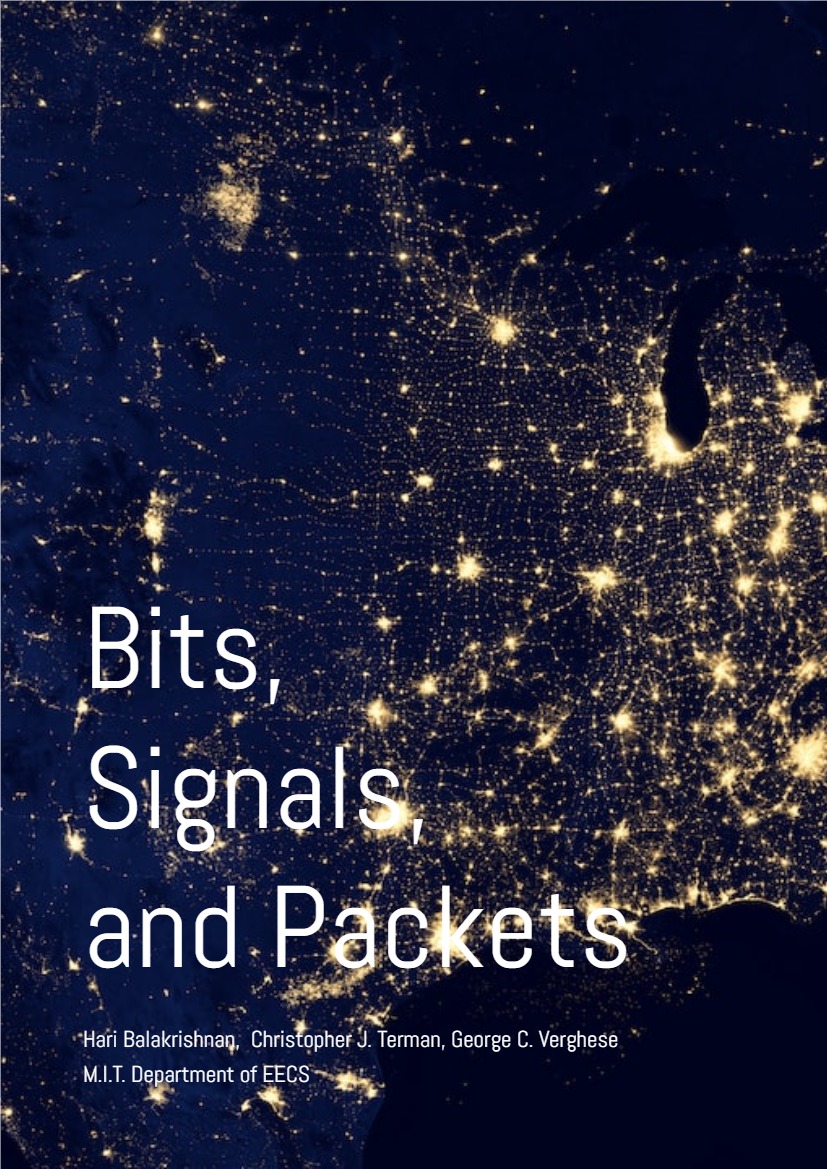1 – An Overview of Networks
Somewhere there might be a field of interest in which the order of presentation of topics is well agreed upon.
Computer networking is not it.
There are many interconnections in the field of networking, as in most technical fields, and it is difficult to find an order of presentation that does not involve endless “forward references” to future chapters; this is true even if – as is done here – a largely bottom-up ordering is followed. I have therefore taken here a different approach: this first chapter is a summary of the essentials – LANs, IP and TCP – across the board, and later chapters expand on the material here.
Local Area Networks, or LANs, are the “physical” networks that provide the connection between machines within, say, a home, school or corporation. LANs are, as the name says, “local”; it is the IP, or Internet Protocol, layer that provides an abstraction for connecting multiple LANs into, well, the Internet. Finally, TCP deals with transport and connections and actually sending user data.
This chapter also contains some important other material. The section on datagram forwarding, central to packet-based switching and routing, is essential. This chapter also discusses packets generally, conges- tion, and sliding windows, but those topics are revisited in later chapters. Firewalls and network address translation are also covered here and not elsewhere.
1.1 Layers
These three topics – LANs, IP and TCP – are often called layers; they constitute the Link layer, the Internet- work layer, and the Transport layer respectively. Together with the Application layer (the software you use), these form the “four-layer model” for networks. A layer, in this context, corresponds strongly to the idea of a programming interface or library, with the understanding that a given layer communicates directly only with the two layers immediately above and below it. An application hands off a chunk of data to the TCP library, which in turn makes calls to the IP library, which in turn calls the LAN layer for actual delivery. An application does not interact directly with the IP and LAN layers at all.
The LAN layer is in charge of actual delivery of packets, using LAN-layer-supplied addresses. It is often conceptually subdivided into the “physical layer” dealing with, eg, the analog electrical, optical or radio signaling mechanisms involved, and above that an abstracted “logical” LAN layer that describes all the digital – that is, non-analog – operations on packets; see 2.1.4 The LAN Layer. The physical layer is generally of direct concern only to those designing LAN hardware; the kernel software interface to the LAN corresponds to the logical LAN layer.
This LAN physical/logical division gives us the Internet five-layer model. This is less a formal hierarchy than an ad hoc classification method. We will return to this below in 1.15 IETF and OSI, where we will also introduce two more rather obscure layers that complete the seven-layer model.
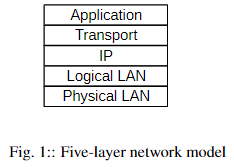
1.2 Data Rate, Throughput and Bandwidth
Any one network connection – eg at the LAN layer – has a data rate: the rate at which bits are transmitted. In some LANs (eg Wi-Fi) the data rate can vary with time. Throughput refers to the overall effective transmission rate, taking into account things like transmission overhead, protocol inefficiencies and perhaps even competing traffic. It is generally measured at a higher network layer than the data rate.
The term bandwidth can be used to refer to either of these, though we here use it mostly as a synonym for data rate. The term comes from radio transmission, where the width of the frequency band available is proportional, all else being equal, to the data rate that can be achieved.
In discussions about TCP, the term goodput is sometimes used to refer to what might also be called “application-layer throughput”: the amount of usable data delivered to the receiving application. Specifically, retransmitted data is counted only once when calculating goodput but might be counted twice under some interpretations of “throughput”.
Data rates are generally measured in kilobits per second (kbps) or megabits per second (Mbps); the use of the lower-case “b” here denotes bits. In the context of data rates, a kilobit is 103 bits (not 210) and a megabit is 106 bits. Somewhat inconsistently, we follow the tradition of using kB and MB to denote data volumes of 210 and 220 bytes respectively, with the upper-case B denoting bytes. The newer abbreviations KiB and MiB would be more precise, but the consequences of confusion are modest.
